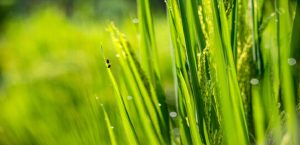Abstract:
Since the Industrial Revolution, global changes have driven a sharp decline in biodiversity, pushing ecosystems to the brink of systematic The long-term coexistence of numerous tree species in tropical rainforests appears to contradict the implications of classical Lotka-Volterra competition model (LVC). The Shigesada-Kawasaki-Teramoto competition (SKTC) formulation of LVC provides a possible solution. We apply SKTC to describe the dynamics of species aboveground biomass, and employ leaf biomass as a proxy for resource competition among species. We examined tree species in the Pasoh 50-ha plot of Malaysian lowland mixed dipterocarp forest. We parameterised species aboveground biomass productivity by tree growth, by recruitment and losses from tree mortality. Biomass productivity minus loss yields the biomass growth of each species population. Using variation in leaf biomass among 1-ha subplots, we estimated the susceptibility of productivity to conspecific and heterospecific leaf biomass. Our model analysis indicated stable coexistence of 351 out of 487 species accessed, with an equilibrium biomass distribution similar to what was observed. Asymptotic growth of individual trees drives the high conspecific susceptibility. Our results resolve the long-standing diversity-stability debate, and help link community organization and ecosystem functions.
Speaker: Prof. Takashi S. Kohyama
Affiliation: Faculty of Environmental Earth Science, Hokkaido University
Time: 4:30 PM, Tuesday, Oct.14, 2025
Venue: Offline: The Conference Hall in Xishuangbanna Headquarte
Online: Tencent Meeting ID: 782 259 000



